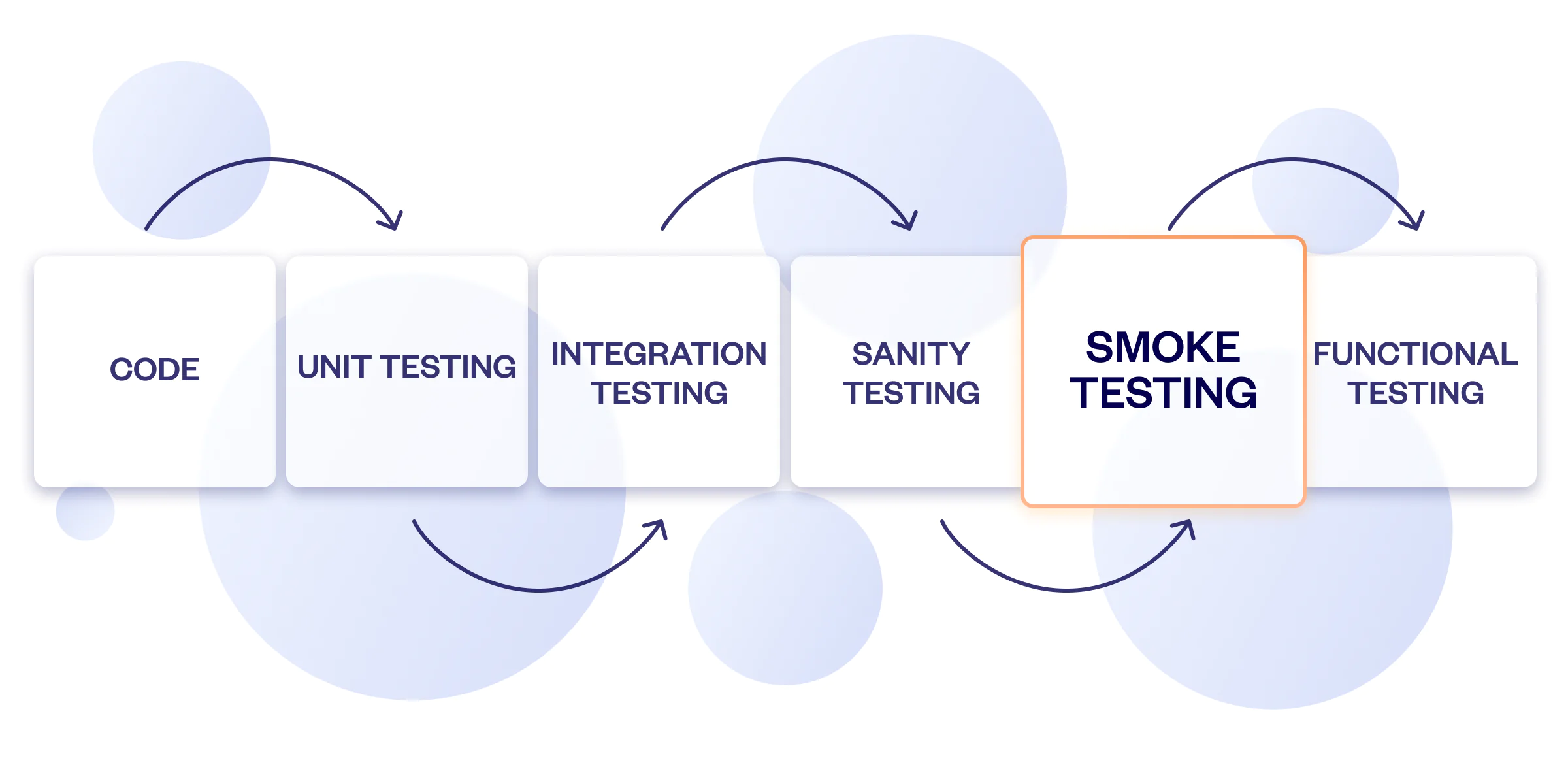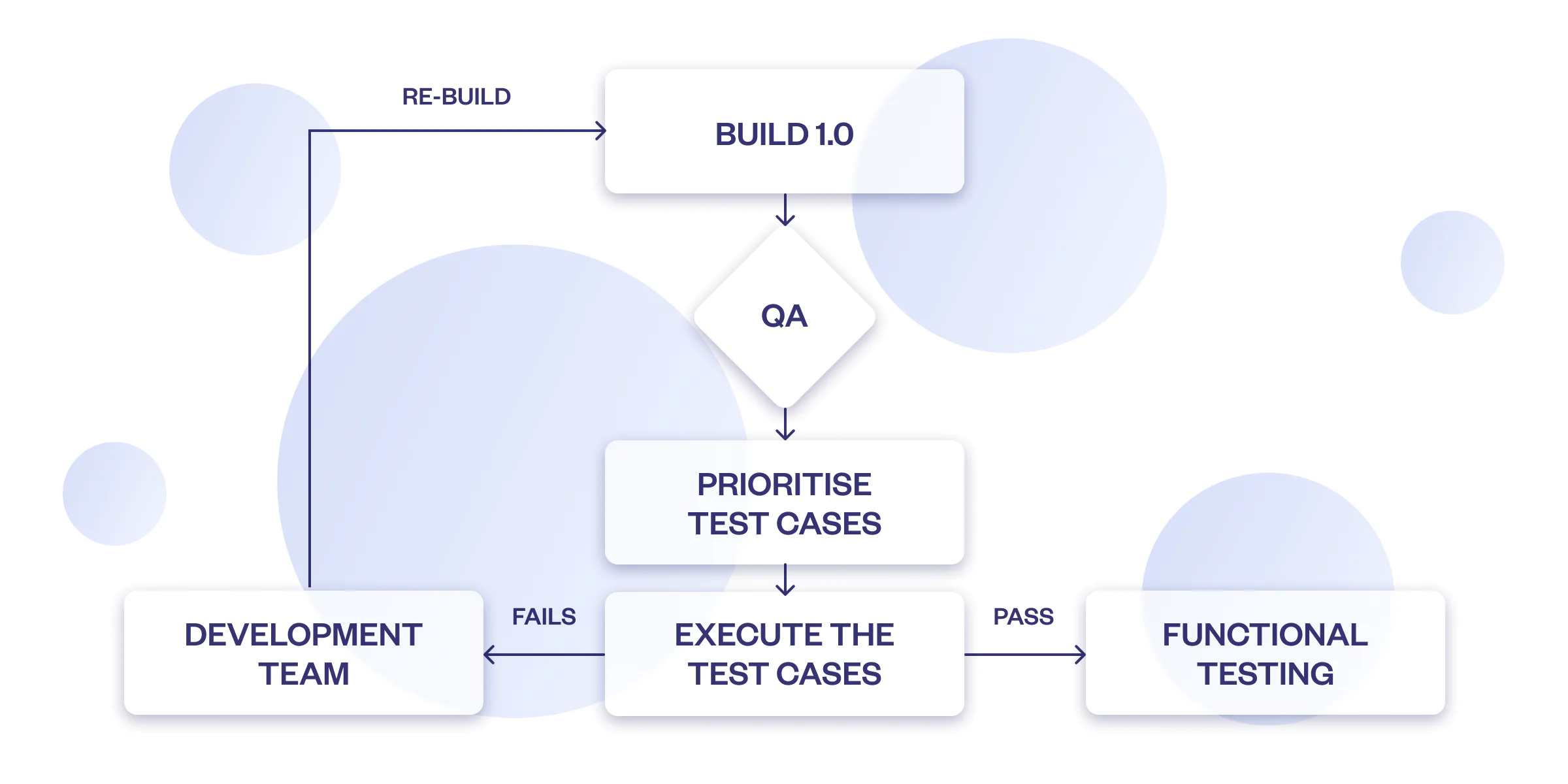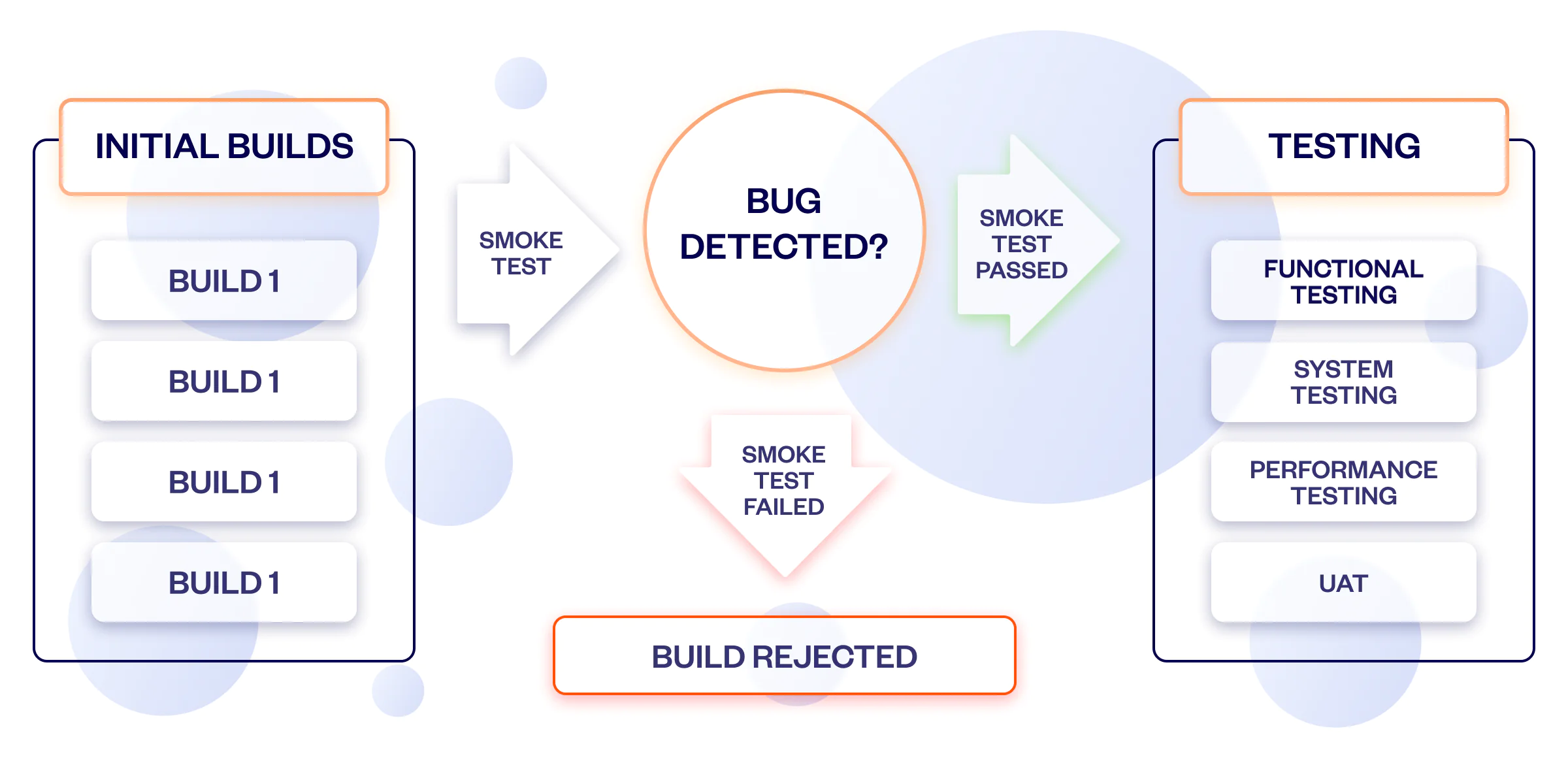Table of contents
Smoke testing is a type of QA testing used to verify if the build is ready for actual testing. Software QA testing is a time-consuming and expensive task, so one has to be sure that it won’t turn into a waste of money if initiated too early. Smoke testing can help with that, as well as identify some nasty issues that must be fixed post haste. However, there are also times when this type of testing can be skipped altogether.
Keep reading to find out all you need to know about smoke testing from Devtorium’s experienced software QA consulting professionals.
Software QA Testing Types: What Is Smoke Testing?
Smoke QA testing is used to determine whether a system or application is functioning correctly. It is typically the first step in a more comprehensive QA process and is used to quickly identify any major issues with the system before further testing can be conducted. Smoke testing can be beneficial for organizations in several ways.
It’s best to perform this type of software QA testing every time when adding a new feature or updating the app’s functionality. Simply put, whenever the existing build undergoes a change, smoke testing helps ensure that it goes smoothly. It focuses on evaluating the performance of critical functionalities. The next stage after this build assessment is functional QA testing.

Benefits of Performing Smoke Testing
- Smoke testing can help save time and money by quickly identifying any major issues with the system. Therefore, it enables software owners to avoid spending resources on more comprehensive QA processes that may not be necessary.
- This type of software QA testing allows for identifying problems at early stages. In addition, it’s easier and cheaper to fix them this way.
- Smoke testing takes little time but can be crucial in detecting critical errors. Therefore, it’s a valuable tool for reducing business risks.
- Adding another software QA testing stage will improve the overall system quality and minimize the risks of new integrations.
Smoke Software QA Testing Process Explained
The process of smoke testing goes like this. First, the development team uploads the new build to the QA environment. Then, the QA team starts their work. Usually, smoke testing is performed manually. However, there are some tools that can automate these processes. The team focuses on testing critical paths to ensure that nothing hampers the overall work of the app. When successful, the team moves on to functional testing.
See the smoke testing cycle in the picture below. Note that if experts detect any issues at this software A testing stage, the process stops until the build is fixed.

When, Why, and Who Needs to Conduct Smoke Testing
Due to its numerous advantages and ease of execution, this type of software QA testing can benefit everyone. Smoke testing is cheap and can be performed by developers as well as QAs. Therefore, when applied wisely, it can help software owners save a lot of money.
It’s imperative to understand that this type of assessment is very basic. As it only investigates crucial functionalities, it won’t help you catch minor bugs. Therefore, it can’t replace more advanced software QA testing stages.
However, there is also no need to hire a software QA consulting service to perform smoke testing specifically. When outsourcing your QA, you should invest in services that allow you to get the highest quality of the final product. So, such a basic step as smoke testing should be carried out in-house.
Meanwhile, smoke testing is extensive enough to give you an idea of whether the build is usable overall. Therefore, performing it every time when making any change is imperative. Such an approach will also make it easier for you to monitor the build’s evolution and facilitate corrections.
Due to the simplicity of this step, some businesses and development teams choose to skip it, hoping that all issues are fixed at later software QA testing stages. At Devtorium, we reject this approach because it wastes resources for both the client and the QA team. Instead, we believe that thorough and structured quality assurance testing is vital, so we take the time to ensure the product’s functionality at every step.





